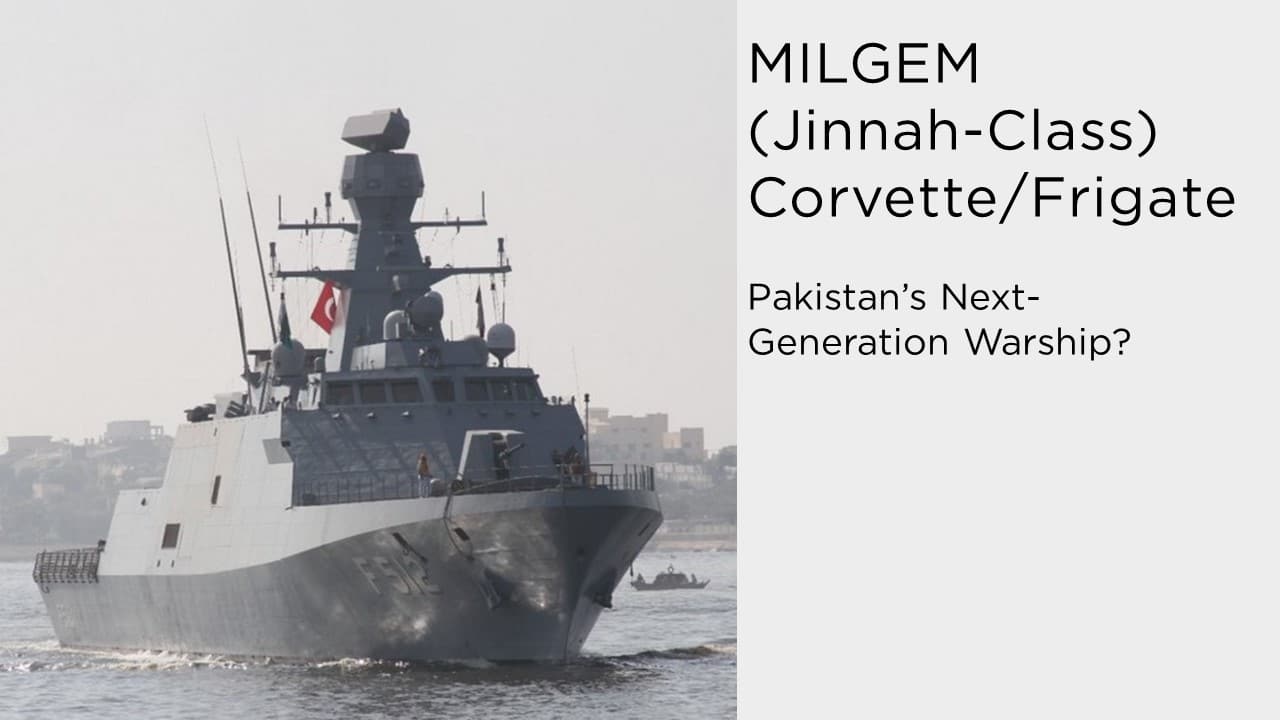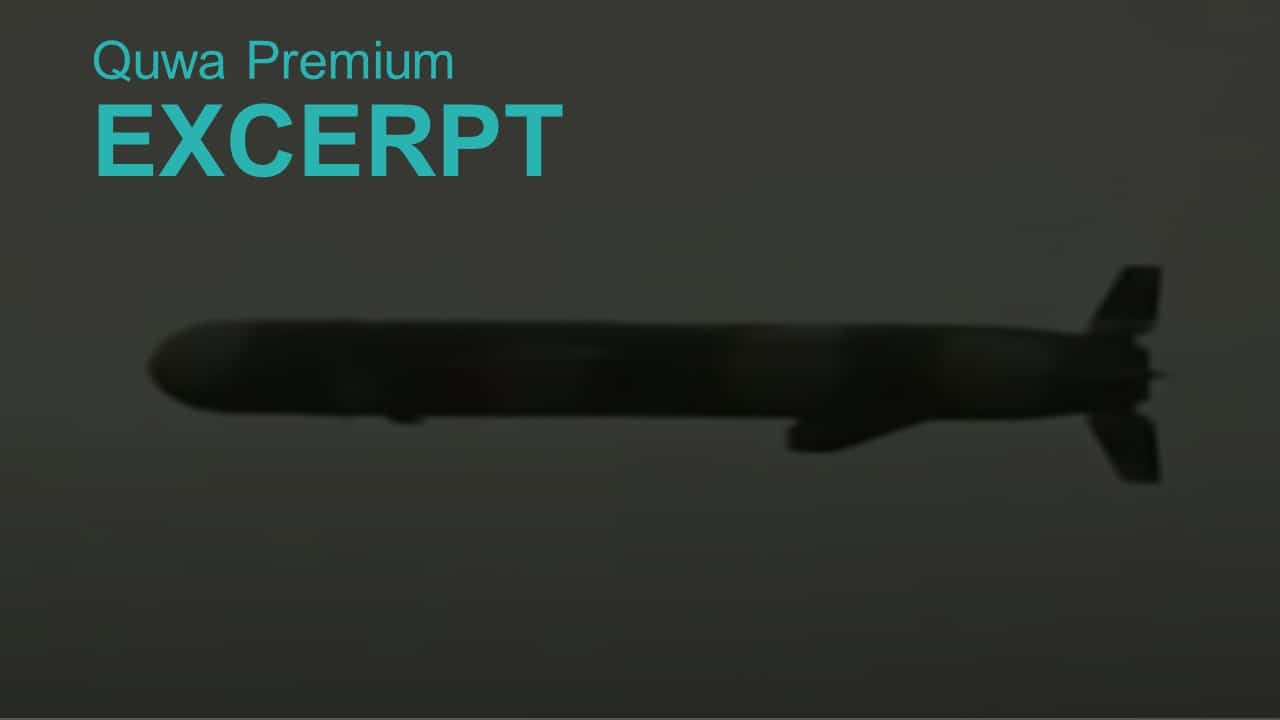2136Views

The Jinnah-Class Frigate: Pakistan’s Next-Generation Warship?
On 05 July 2018, the Pakistan Ministry of Defence Production (MoDP) signed a deal with Turkey’s Military Factory and Shipyard Corporation (ASFAT A.Ş.) for four MILGEM warships for the Pakistan Navy (PN).[1] The PN is currently slated to receive all four ships by 2024, with the first scheduled for 2023.[2] Two of the ships will be built in Turkey, and the other two in Pakistan under a transfer-of-technology (ToT) agreement.
The contract has a reported value of $1 billion to $1.5 billion. Though high cost (relative to the PN’s other programs), Pakistan’s MILGEM program calls for both modern ships and a proprietary frigate design. In terms of the latter, ASFAT A.Ş. will assist its Pakistani counterparts – i.e., Maritime Technologies Complex (MTC), Karachi Shipyards & Engineering Works (KSEW) and Navy Research and Development Institute (NRDI) – in designing a frigate for the PN. The PN will also own the intellectual property (IP) rights of the frigate.[3][4]
The fourth MILGEM will be the lead ship of the joint-frigate design. Given that the PN is also buying the IP rights of this ship, it is likely that the fourth ship will form the basis of the PN’s next-generation frigates. For the PN, ownership over its own frigate design would allow it to construct additional ships at will. Thus, the in-house frigate it is designing with ASFAT A.Ş.’ could be its mainstay surface combatant in the future.
The MILGEM is a High-Tech Asset As-Is
Based on disclosures thus far, it seems that the PN opted to configure its MILGEM ships as high-tech and integrated systems. From situational awareness to electronic warfare (EW) to munitions, the MILGEM as well as Type 054A/P will both set the standard for the PN’s surface warships.
Subsystems
Most of the PN MILGEM’s subsystems will come from Turkey. In fact, Aselsan secured a $191 million US contract in November 2019 to supply subsystems for the PN MILGEM program.
For the PN, the reason for this selection is likely a mix of factors, the foremost being Turkey’s willingness to extend a loan for the program. That loan likely covers Turkish origin products and services, so financing is easier for the PN. Turkey also already integrated those systems, so integration costs are lower as well.
However, these systems are also designed for a NATO end-user (Turkey), so there could be a measure of quality or performance involved as well. In a way, Turkey has become Pakistan’s intermediary for Western and NATO-grade technologies it is unable to acquire (at least affordably) from Europe.
Finally, Turkey showed a willingness to open or modify its subsystems so that the PN can integrate its own weapons, data links, and other systems to those solutions.
Aselsan SMART-S Mk2
The PN MILGEM’s main search and targeting radar will be the SMART-S Mk2. The design belongs to Thales Group (Thales Nederland), but Aselsan manufactures the radar under license.[5] However, in the years since it took on the program, the company succeeded in sourcing many critical radar components domestically. In fact, Thales is sourcing the transmitter/receiver modules (TRM) of these radars from Aselsan.[6]
The Aselsan SMART-S Mk2 is an active phased array radar offering an instrumented range of 250 km. The radar can detect and track up to 500 airborne and surface targets. Based on Thales Nederland’s catalogue, the radar can track missiles at 50 km, and maritime patrol aircraft (MPA) at 200 km.[7]
The radar is marketed with dedicated electronic counter-countermeasures (ECCM) capability, suggesting a measure of defensibility against radar jamming/spoofing.
Aselsan ARES-2NC
The Aselsan ARES-2NC is a variant of the electronic support measures (ESM) suite the PN selected for use from the Agosta 90B submarine (ARES-2N). The ESM suite will allow the MILGEMs to passively monitor as well as categorize and record enemy radar and communication signals. In turn, the MILGEMs will add the signals to a threat library in which electronic attack (EA) assets can use to spoof/jam enemy emitters.[8]
However, the ARES-2NC offers an additional capability: the ability to engage in EA through a directional radar-frequency (RF) jamming system. The ARES-2NC uses digital radio frequency memory (DRFM) for its EA role, covering a frequency range of 7.5-18 GHz. It is also equipped with a radar warning receiver (RWR), so it will alert the crew of enemy radar targeting against the ship…
End of Excerpt (714/3,481 words)
You can download the complete report by logging in (click here) or subscribing to Quwa Premium (click here).
[1] Press Release. “Pakistan Navy Signed Contract for Acquisition of 4x MILGEM class warships with Turkey.” Press Information Department. Ministry of Information. Government of Pakistan. 05 July 2018. URL: http://pid.gov.pk/site/press_detail/8782
[2] İbrahim Sünnetci. ““Together for Peace” AMAN-19 Multinational Naval Exercise & Pakistan – Turkey Defence Cooperation.” Defence Turkey. Volume 13. Issue 91. URL: https://www.defenceturkey.com/en/content/together-for-peace-aman-19-multinational-naval-exercise-pakistan-turkey-defence-cooperation-3454
[3] Ibid.
[4] Press Release. “Pakistan Navy Signed Contract for Acquisition of 4x MILGEM class warships with Turkey.” Press Information Department. Ministry of Information. Government of Pakistan. 05 July 2018.
[5] İbrahim Sünnetci, “A Look at Latest Status of the PN MILGEM Project.” Defence Turkey. Volume 14. Issue 97. 2019: URL: https://www.defenceturkey.com/en/content/a-look-at-latest-status-of-the-pn-milgem-project-3824
[6] “Thales Group to Use Aselsan Modules for Radars.” Defence Turkey. Volume 9. Issue 55. 2014: https://www.defenceturkey.com/en/content/thales-group-to-use-aselsan-modules-for-radars-1717
[7] Product Catalogue. Thales SMART-S Mk2. Thales Group: https://www.thalesgroup.com/sites/default/files/database/d7/asset/document/Datasheet%20Smart_Smk2_DS152_10_12_HR.pdf
[8] İbrahim Sünnetci, “A Look at Latest Status of the PN MILGEM Project.” Defence Turkey. Volume 14. Issue 97. 2019.


